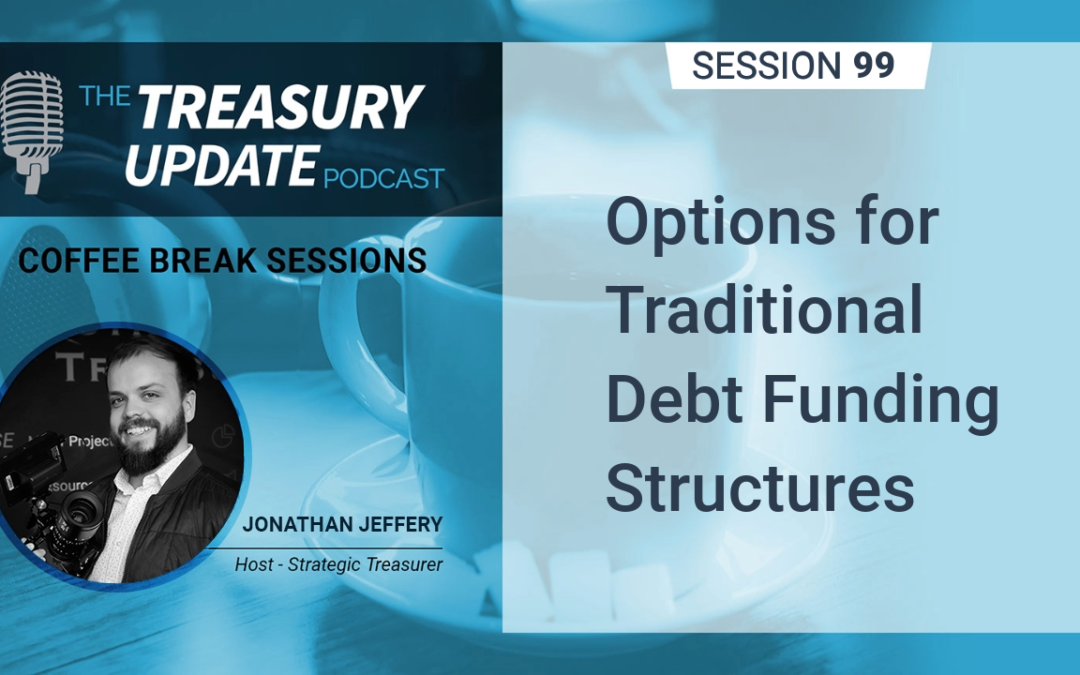
by Brian Weeks | Dec 21, 2023 | Coffee Break Sessions, Podcast
In today’s Treasury Update Podcast episode, Paul Galloway continues the mini-series on debt funding by sharing insights on three alternative debt funding options: mezzanine debt, convertible debt, and perpetual debt. He shares a basic understanding of their unique functionalities, as well as the strategic reasons treasurers might opt for these alternatives. Tune in for a concise breakdown of what alternative debt funding options look like.

by Brian Weeks | Dec 7, 2023 | Coffee Break Sessions, Podcast
In today’s episode of the Treasury Update Podcast, Paul Galloway shares three examples of traditional debt funding structures. Listen in as he breaks down syndicated loans, senior debt, and revolvers. Learn what makes each of these financing tools unique and why treasurers may strategically choose one over the other.

by Brian Weeks | Jun 12, 2023 | Podcast
In this podcast, Craig Jeffery and Jason Campbell from Strategic Treasurer discuss key elements, the right mindset, and a roadmap for help your treasury team excel. They discuss building the right team, leveraging technology, and establishing effective structures. Equipping your team with the right warning signs and signals is vital, but developing the ability to read and react to these indicators is equally important. Listen in as Craig and Jason unpack this!

by Brian Weeks | Mar 20, 2023 | Replays, Webinars
Continuing the series on bank relationship management, we transition now to bank account management and structures. Properly designing the cash management structures is vital for operational efficiency and control. Banking structures, for most corporations, will include multiple banks, and several longstanding principles and techniques are being supplemented with new structures. Turmoil in the banking sector has caused a revival for operational backup structures to strengthen the risk management footing of the organization. Additionally, the process and tools of bank account management can look notably different depending upon the organization’s complexity and size. This session will highlight many of the key details from both of these components.




